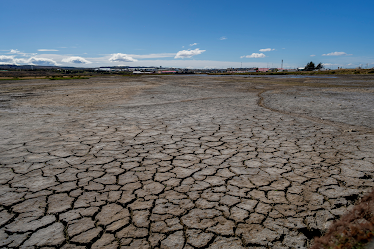Post 1
Plate Tectonic
Chile, like many South American countries, lies right on top of the South American plate. According to an article covered by the National Oceanic and Atmospheric Administration, Chile lies right on top of the South American Plate and is surrounded by the Nazca Plate to the West of the country. The Nazca Plate is connected to the Pacific plate under water. The various connections to tectonic plates create many hazards for those residing within the country of Chile. An image shared by the U.S Geological survey demonstrates the placement of the tectonic plates. Through the image we see the South American plate. According to the slides covered in class the South American plate is a convergent plate. This means that it is prone to several natural hazards. The natural hazards being explosive volcanoes, earthquakes, flooding, and landslides. Convergent boundaries create collisions. Collisions occur when two plates collide and in instances such as earthquakes, two plates will rub across each other. In the case of Chile, the proximity between the South American Plate and Nazca Plate will cause collisions.
Sources used;
“Inspire: Chile Margin 2012.” INSPIRE: Chile Margin 2012: Education: Expedition Purpose: NOAA Office of Ocean Exploration and Research, oceanexplorer.noaa.gov/explorations/12chile/background/edu/purpose.html#:~:text=Chile%2C%20and%20the%20other%20countries,called%20the%20East%20Pacific%20Rise. Accessed 31 Jan. 2024.
“Tectonic Plates of the Earth.” Tectonic Plates of the Earth | U.S. Geological Survey, www.usgs.gov/media/images/tectonic-plates-earth. Accessed 31 Jan. 2024.
US Department of Commerce, National Oceanic and Atmospheric Administration. “What Features Form at Plate Tectonic Boundaries?” Ocean Exploration Facts: NOAA Office of Ocean Exploration and Research, 11 Mar. 2014, oceanexplorer.noaa.gov/facts/tectonic-features.html#:~:text=If%20two%20tectonic%20plates%20collide,at%20subduction%20zones%20as%20well.



Hi Jassibe! I found some very interesting facts about Chile and the tectonic plates it lies on top of. It was interesting to hear about the Nazca plate and how it connected to the Pacific Plate under water. I found it interesting how so many natural hazards can be formed and shaped by the tectonic plates as it holds a majority of these hazards. Thank you for sharing! This was very informative information.
ReplyDeleteHello Jassibe I hope all is well. The Congo lies deep within the seismically stable African Plate, thousands of miles from any active plate boundaries or fault lines. This intraplate setting translates to very low earthquake and volcanic risk. Chile, however, straddles the convergent boundary between the Nazca and South American plates. This volatile plate margin location makes Chile prone to frequent high-magnitude earthquakes and active volcanism resulting from subduction processes. In summary, the Congo experiences negligible seismic and volcanic hazards due to its isolated intraplate location, contrasting greatly with Chile’s extremely hazardous position at an active plate edge. This represents two opposite ends of the spectrum in terms of geospatial risk profiles.
ReplyDelete